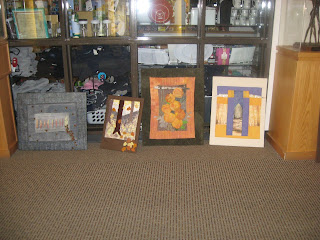Enter the grape leaf, yogurt, and herb pie:
 |
| This cookbook is a fountainhead of excellent culinary adventures. |
Then I put them in a bowl, covered them with boiling water, and let them soak 10 minutes. No problem. But the recipe didn't say that when they came out of the boiling water they would have the consistency of wet kleenex. That meant I had to unroll and flatten them out and dry them on ...tea towels. Who has tea towels?
Next, I had to cut off the stems and drape and arrange the leaves in a 9 inch pie dish.
The recipe called for a pie filling consisting of Greek yogurt, pine nuts, parsley, tarragon, dill, mint, lemon zest, and rice flour. After the filling was put in, the grape leaves were folded over the top and the whole was covered with breadcrumbs;
While that was in the oven (375 degrees, 40 minutes), I made burnt eggplant with tahini--a side dish suggested by the cookbook. This one called for some unusual ingredients, such as pomegranate molasses and pomegranate seeds. It also called for an unusual cooking technique: burning the eggplant directly on a stove burner:
 |
| What a mess! That's a bottle of pomegranate molasses standing by next to the burner. |
Here's the finished recipe of burnt eggplant with tahini, decorated with pomegranate seeds and being scooped up by Joe Rubin, with a piece of pita at the ready in his other hand.
 | |
| Here's how the grape leaf pie looked after its trip through the oven and after we'd helped ourselves to a couple of servings. |


































